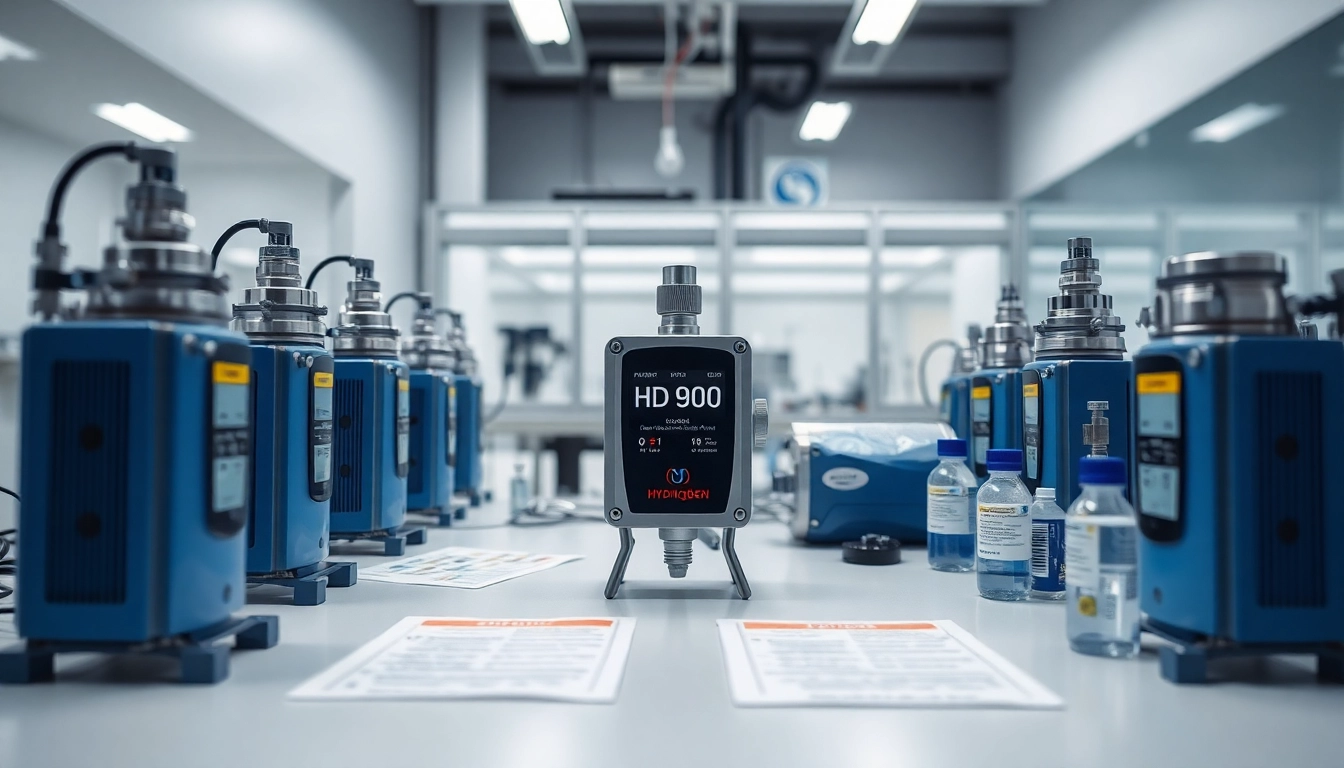
Understanding Hydrogen and Its Risks
1. What is Hydrogen?
Hydrogen is the simplest and most abundant element in the universe, consisting of just one proton and one electron. It plays a critical role in various chemical processes, and is a key component of water and organic compounds. Its lightness and energy content make it a promising fuel source for the future, especially as society seeks renewable energy alternatives. However, the properties that make hydrogen valuable in applications also highlight its risks, especially when it comes to safety.
2. The Dangers of Hydrogen Gas
Although hydrogen gas (H2) is non-toxic and has a high energy yield, it poses significant risks, especially in high concentrations. Hydrogen is extremely flammable and can easily ignite when mixed with air in the right proportions. In confined spaces, it can accumulate and create explosive environments. The lack of odor or color makes it undetectable to humans, which is why effective hydrogen detection is crucial for safety.
3. Importance of Hydrogen Detection
Effective hydrogen detection serves to mitigate risks associated with hydrogen use across various industries, including chemical processing, energy production, and automotive. Timely detection of hydrogen leaks not only protects personnel and equipment but is also a critical component in compliance with safety regulations. By understanding these risks and implementing robust detection solutions, organizations can safeguard their operations and enhance their safety protocols.
Types of Hydrogen Detection Technologies
1. Electrochemical Sensors
Electrochemical sensors are among the most commonly used devices for hydrogen detection. They operate by measuring the electrical current generated as a result of hydrogen oxidation. When hydrogen gas comes into contact with the sensor electrodes, a chemical reaction occurs, producing an electric signal that correlates with the concentration of hydrogen present. These sensors are known for their high sensitivity and selectivity, making them suitable for various industrial applications.
2. Semiconductor Sensors
Semiconductor sensors use materials that change their electrical resistance in the presence of hydrogen. Typically made from metal oxides, these sensors operate at elevated temperatures due to the need for thermal activation of the gas-sensing reactions. They are favored for portable applications and work well in detecting low levels of hydrogen, albeit with a longer response time compared to electrochemical sensors.
3. Infrared Technologies
Infrared (IR) technologies utilize the absorption of infrared light at specific wavelengths to detect hydrogen gas. These sensors are particularly advantageous in environments where other gases might interfere with the detection process, as they can be finely tuned to focus on the specific absorption characteristics of hydrogen. IR sensors are robust and can operate in harsh conditions, though they are generally more expensive and require regular calibration.
Applications of Hydrogen Detection
1. Industrial Applications
In industrial sectors such as petrochemicals, metal refining, and electronics manufacturing, hydrogen detection is vital. Facilities often handle large volumes of hydrogen, and any potential leaks can lead to catastrophic accidents. Hydrogen detectors are installed in strategic locations throughout these facilities to ensure that any leaks are detected immediately, enabling prompt evacuation and corrective measures.
2. Safety Measures in Residential Areas
As more homes incorporate hydrogen fuel cells for energy generation, the need for hydrogen detection systems in residential settings becomes increasingly important. These detectors help monitor hydrogen levels in locations such as basements or garages where fuel cells may be housed. Homeowners equipped with hydrogen detection systems can maintain safety and peace of mind, knowing they are protected against potential leaks.
3. Hydrogen in Renewable Energy
With the rise of hydrogen as a key player in the renewable energy landscape, effective detection becomes essential in applications like hydrogen storage and transportation. Hydrogen can be stored in pressurized tanks or in solid-state forms, each requiring specific detection solutions to monitor potential leaks and ensure safety during handling. The integration of detection technologies within these systems can significantly enhance safety protocols.
Choosing the Right Hydrogen Detector
1. Factors to Consider
When selecting a hydrogen detector, several factors should be taken into account including the environment in which it will be used, the expected concentration levels of hydrogen, response time, and the presence of other gases. Understanding the specific application and environment helps in choosing a sensor that fits best to the operational needs.
2. Maintaining Detector Accuracy
To ensure that hydrogen detection systems operate reliably, regular maintenance and calibration are crucial. Manufacturers typically recommend calibration intervals, but factors like changes in operating conditions or usage patterns may call for more frequent checks. Routine maintenance not only extends the lifespan of the equipment but also ensures its accuracy and reliability in detecting gases.
3. Cost-Effectiveness of Detection Solutions
Cost considerations play a significant role in selecting hydrogen detection solutions. Beyond the initial purchase price of the detectors, organizations must evaluate the total cost of ownership, which includes maintenance, calibration, and potential downtime due to equipment failure. Investing in high-quality detectors from reputable manufacturers often pays dividends in terms of reliability and safety.
Future Trends in Hydrogen Detection
1. Emerging Technologies
The landscape of hydrogen detection is evolving rapidly with advancements in technology. Innovations such as nanotechnology-enabled sensors offer improved sensitivity and faster response times. Research is also underway in developing wireless sensor networks that allow for remote monitoring of hydrogen levels, enhancing operational security and efficiency.
2. Regulatory Changes and Standards
As the hydrogen economy grows, regulatory bodies are establishing stricter standards regarding hydrogen safety. Compliance with these regulations is essential for industries that utilize hydrogen, driving the need for advanced detection solutions. Organizations must stay informed about these changes to ensure their safety protocols align with the latest industry best practices and standards.
3. Advances in Integrated Detection Systems
Future hydrogen detection systems may integrate multiple gas detection technologies, providing a comprehensive monitoring solution. These integrated systems can offer enhanced capabilities and improved safety by detecting a range of atmospheric conditions rather than focusing solely on hydrogen. This holistic approach helps manage risk more effectively in diverse environments.






